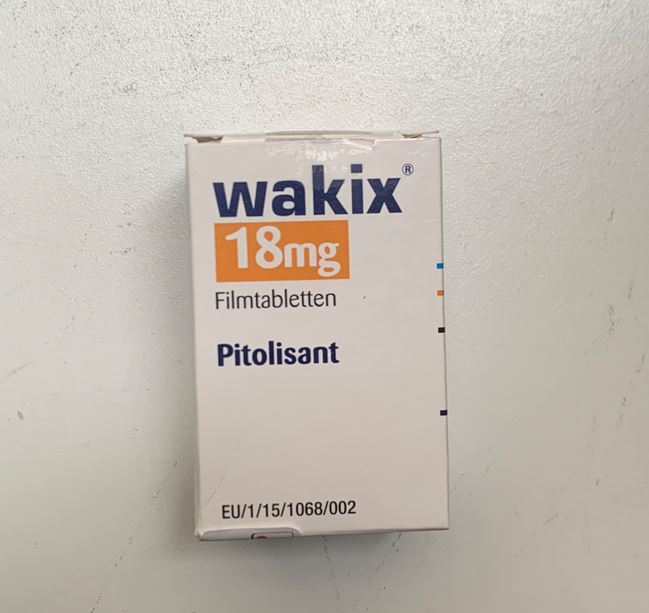For the last two weeks, I have been experimenting with pitolisant, which is perhaps the most interesting neuropharmaceutical I have experimented with in many months. Pitolisant is an antagonist at the H3-receptor.
Simplified, while noradrenaline in the brain is responsible for alertness, hypothalamic histamine is responsible for wakefulness – explained in greater detail here: An Introduction to Neurotransmitters (and How to Manipulate Them)
Histamine in the brain is synthesized by the tuberomammillary nucleus (TMN), which is intricately related and adjacent to the suprachiasmatic nucleus (the “central clock” of the brain). And the major way how the TMN (within the hypothalamus) “wakes up” the brain is via the state of histaminergic tone – highest during wakefulness and lowest during sleep.
It is hypothesized that the wakefulness-promoting effects of modafinil are at least partly due to the indirect increase of TMN histamine release. Relatedly, antihistamine drugs are great hypnotics (e.g., trazodone, quetiapine, mirtazapine, diphenhydramine).
However, for a long time, pharmacologically tapping into the histaminergic system of the brain was off-limits because of the body-wide immunological side effects (particularly mast cell degranulation as it happens during an allergy), which are the reason for the existence of antihistamine drugs such as levocetirizine and desloratadine.
Enter pitolisant. Similar to other neurotransmitters, histamine levels are co-regulated by a negative feedback inhibition at the presynaptic terminal. In the case of histamine, the responsible autoreceptor is the Gi-coupled H3 receptor. By antagonizing this receptor, brain histamine release is disinhibited without unwanted peripheral histamine action.
Pitolisant has been approved for only narcolepsy. Similar to modafinil though, it is a drug that is useful for excessive daytime sleepiness, such as with sleep apnea.
My experience thus far has been quite pleasant. The effect is subtle but definitely present. It seems like consciousness is overclocked by 10-20%. Sensations are more high-definition (similar to the effects of microdosing psychedelics – but without the distortions), I can think better, and I have an easier time being present in the moment. Indirectly, my mood is slightly better because feeling awake just feels good. I am currently on 5mg per day, but I will probably increase to 10mg per day soon.

The major and perhaps only downside of pitolisant is its price. In my country, I pay about 10 Euro for a 20mg pill. Given that I am a homozygotic CYP2D6 poor metabolizer, I only need half what other people need for the same effect. So, the increased wakefulness currently costs me about 2.5 Euro per day (5mg), and may soon cost me roughly 5 Euros per day (10mg) should I decide to stay on it, which is a price similar to a Starbucks coffee.
It is mostly devoid of side effects apart from headache, anxiety, and insomnia, all of which though are hardly above placebo levels. Thus far, I have not had a single side effect. I would not be surprised if pitolisant turns out to be a worthwhile dementia prevention tool too given that having an active brain by itself is protective (similarly, depressive states by themselves are neurodegenerative – both directly as well as indirectly through its effect on brain activity and lifestyle).
If I had to put a number on it, I would say that I am roughly 20-30% more awake on it. I expect this to go down to the 10-15% range over time as tolerance builds up. According to the literature, there should be no tolerance build-up but the “scientific” literature claims the same thing for modafinil or eszopiclone… Given that I find life much better if I am thoroughly awake, 5 Euros per day is a small price to pay. I will write a more in-depth article about pitolisant at some point.
Follow-up
I have been using 10mg of pitolisant for about half a year now. I like it – it makes my day 3-5% better. No side effects whatsoever. I am a little more awake. I will continue taking it.
Weekly observations
I share two Weekly Observations in my newsletter every week, similar to the one above. You can find the full archive here.
Disclaimer
The content available on this website is based on the author’s individual research, opinions, and personal experiences. It is intended solely for informational and entertainment purposes and does not constitute medical advice. The author does not endorse the use of supplements, pharmaceutical drugs, or hormones without the direct oversight of a qualified physician. People should never disregard professional medical advice or delay in seeking it because of something they have read on the internet.
